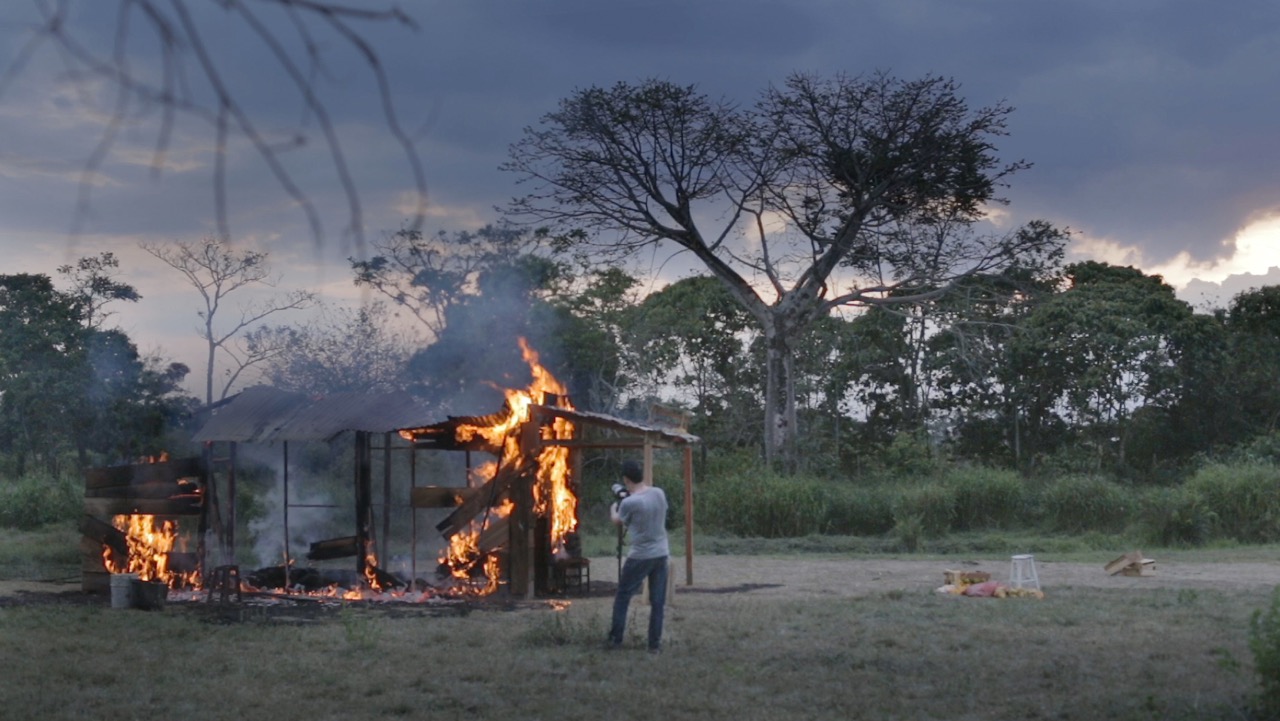
When art asks us to be horrified, Colombian filmmaker and conceptual artist Mauricio Arango asks: To what end? “Passive witnessing is one concern I have,” he explains. The filmmaker considers how traumatic events can make people feel helpless. “Maybe I’m tired of questions of ‘What you can do?’”
Now based in New York, Arango works from a high-rise suite in the Hudson Yards (“Housing lottery!” he grins) that he shares with the 20-year-old cockatiel featured in his latest film, Revolution’s A Lie (2018). Arango takes many months, even years of editing to achieve the refined and alluring rhythms that define his oeuvre.
Arango draws inspiration from the horror of Japanese director Kaneto Shindo and the beauty of Korean director Hong Sang Soo. For filming, he frequently heads back to South America and assembles his crew. To The Dead (2016) was shot in Colombia in Bogotá’s Central Cemetery, near where Arango grew up. During filming, the artist was mugged and lost some of the footage. Like a ghost from the past imposing limitations, this event led him to restructure the remains. He did so by delivering a hard-boiled narration over Fellini-esque splashes of colorful flowers adorning statues and crypts. Much like in this film, death is a big presence in his work, but never in the same form. Across his filmography, Arango wryly casts himself in whatever role is needed, often learning the skills required from scratch in residencies like the Headlands Center for the Arts in Sausalito, California, the MacDowell Artist Colony in New Hampshire and Manhattan’s El Museo del Barrio.
Arango’s meditative The Night of the Moon Has Many Hours (2010) is his most technically ambitious movie, having been filmed at night and on water. Ants swarm over a stretch of barbed wire. A fisherman awakes in the night. He walks through the woods to a river and boards a flatboat, casting off with a long oar. He pulls seven bodies out of the water, all young men, and lays them across the deck, their doppelgangers reflected in the inky black below.
This story actually happened. A lot. Bodies floated through Colombian waterways in the 1990s and early 2000s as right-wing paramilitary groups executed left-leaning citizens and dumped them there. Having lived in Bogotá through this period, Arango avoids all explanation. Without giving clear reason to grieve, the film forgoes the loaded intentions of catharsis, understanding that Styx is no good place for a reunion. In darkness you see nothing. In the river you see yourself. Arango’s intended audience has spooky implications.
In Revolution’s A Lie, Arango the writer steps in, this time unassumingly slipping painful pieces from his own life into the story of a New York City acting coach who ends class early to catch a gallery screening. Arango recruits Manhattan-based acting coach Grace Kiley to clip and arrange her toenails and wipe her pet bird’s ass, amassing effortless portraits of the mundane. It marks his first project to be shot in New York after landing the Independent Study Program at the Whitney Museum. His commitment to capturing new imagery never keeps the films’ understated sound design from stealing the show, though, in the end ceding duties to his regular Foley artist. Arango completes No Weight Whatsoever, his second film of 2018, this fall.
Craving more culture? Sign up to receive the Cultured newsletter, a biweekly guide to what’s new and what’s next in art, architecture, design and more.



